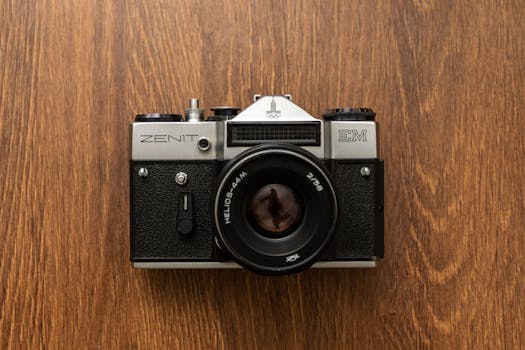Tutorials
Transform Your Home Screen: Tips for More Productivity and Order
Discover how to organize your device's home screen with practical tips to maximize your productivity and make it easier to access essential apps.
Advertisement
Organizing your device's home screen may seem like a simple task, but its importance goes far beyond aesthetics. A well-structured home screen can increase your productivity and provide a more efficient user experience.
Your home screen is your first point of contact with the applications you use daily. Therefore, thoughtful organization can facilitate access to the most relevant information and tools. The goal is to optimize your time, making your tasks more efficient.
With a few simple tips and strategies, you can transform your home screen into a functional space that meets your daily needs and maximizes your productivity. Let's dive into the best practices for effectively organizing your home screen.
Identify Your Needs and Priorities
Before you start organizing your home screen, it's essential to understand your main needs and priorities. Everyone has a unique set of apps and tools they use daily.
Reflecting on the activities you perform frequently will help you determine which icons or apps should be given prominent placement. List the apps you use most.
Sort these apps based on how often they're used. Essential apps should be easily accessible, while those used occasionally can be organized into folders or on the second page.
Once you have a clear list, you can visualize what your home screen looks like with your most-used apps highlighted. This makes your routine even easier.
This identification step is crucial and provides the foundation for efficient organization, ensuring you can always find your apps much more easily.
Use Folders to Organize Applications
A great way to organize your home screen is to create folders to group related apps. This not only saves space but also makes navigation more intuitive.
For example, you can create folders for categories like "Work," "Entertainment," and "Social Media." This grouping helps you quickly access the apps you need.
When creating these folders, choose names that are meaningful and easily recognizable. Avoid using acronyms or complicated names that can be confusing when searching for an app.
Additionally, when adding new apps, always consider whether they fit into one of the existing folders. This helps keep your home screen clean and organized.
Ultimately, using folders improves efficiency and allows for quick access to apps, making your experience with the device more fluid.
Choose a Simple and Functional Background
A plain or understated background can make a big difference in organizing your home screen. Overly flashy or detailed images can distract from app icons.
Choosing neutral colors or soft patterns helps create a pleasant visual environment and makes apps easier to find. Consider color harmony when choosing a background.
Another advantage of a simple background is that it allows icons to stand out, making them easier to identify at a glance. Good visibility is key to efficiency.
Also, consider the functionality of your wallpaper. Some devices allow you to customize the home screen and lock screen wallpapers separately.
Therefore, a well-chosen background not only enhances aesthetics, but can also boost your productivity and efficiency when using your device.
Keep Icons and Widgets in Order
Keeping your icons and widgets organized is essential for a functional home screen. Position the icons you use most often in easy-to-reach locations.
Additionally, consider using relevant widgets, such as weather forecasts, calendars, and reminders. These can provide quick information without having to open an app.
When arranging icons, create a logical arrangement. For example, group widgets at the top and icons at the bottom, or vice versa. This will make navigation more intuitive.
Remember to review your home screen regularly. Uninstall or remove icons you no longer use to keep your screen clean and organized.
Keeping your home screen organized not only makes your device look nicer, but it also improves usability by allowing you to find what you need quickly.
Utilize Device Personalization Features
Modern operating systems offer a wide range of customization options that can enhance the functionality of your home screen. Explore these features to tailor your device to your needs.
For example, you can change the home screen layout, experiment with different icon sizes, or change the icon grid. These options can produce a more personalized experience.
Additionally, consider using themes that are available across multiple devices. Using themes can further simplify your experience by making it easier to view.
Another interesting feature is the shortcuts for quick actions. You can set up actions that directly open an app function, such as creating a new calendar event.
This way, personalization not only improves the aesthetics of your home screen, but can also increase your day-to-day efficiency.
Regular Organization and Review
Organizing your home screen shouldn't be a one-time task, but an ongoing process. Performing a regular review ensures your screen remains functional and up-to-date.
Set a timeframe for reviewing your home screen, whether monthly or biannually. During this review, check what's working and what could be improved.
Uninstall apps you no longer use. This not only frees up space but also improves device performance. A clean screen helps with mental clarity.
Take this opportunity to evaluate new apps that may have appeared on the market. Incorporating new useful tools can be beneficial to your routine.
By committing to reviewing and organizing your home screen, you ensure it always reflects your needs and priorities, optimizing your user experience.
Conclusion
Organizing your home screen in a functional way is an important step toward improving your productivity. With these tips, you can create a space that meets your daily needs in a practical way.
Identify your priorities, organize your apps into folders, choose a simple background, and keep icons and widgets organized. Each of these steps contributes to an efficient home screen.
Also, take advantage of the customization features and remember to review your screen frequently. This way, you'll maintain a digital environment tailored to your needs.
By following these suggestions, your home screen can become a true control center, capable of facilitating your tasks and improving your daily life.
Invest some time in organizing your home screen and notice the positive changes in your routine. Organizing ensures more productive use of your device.




